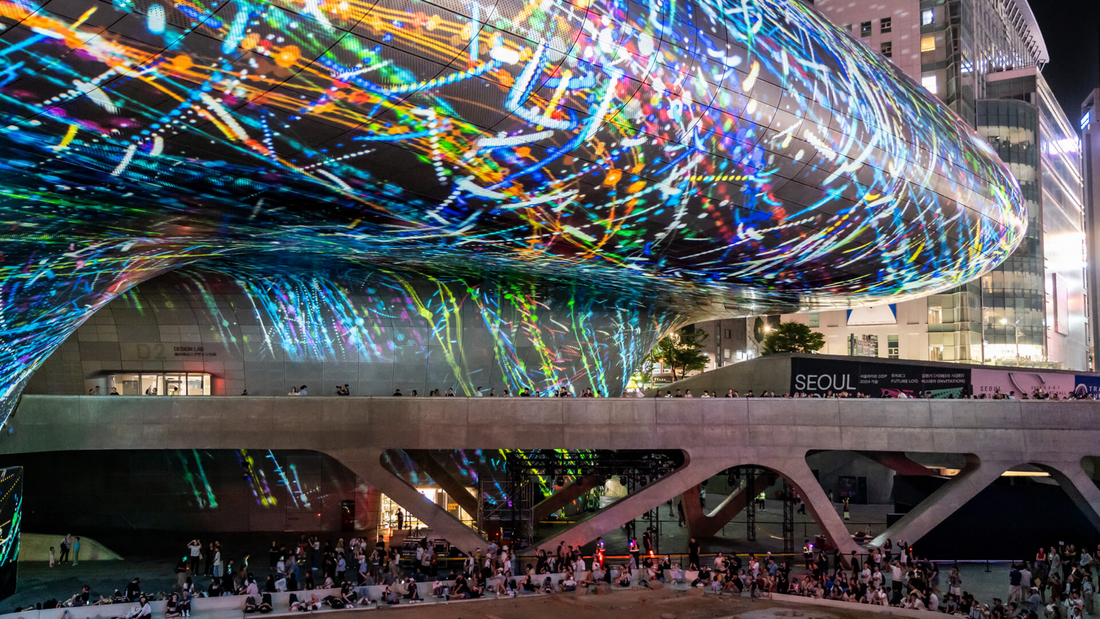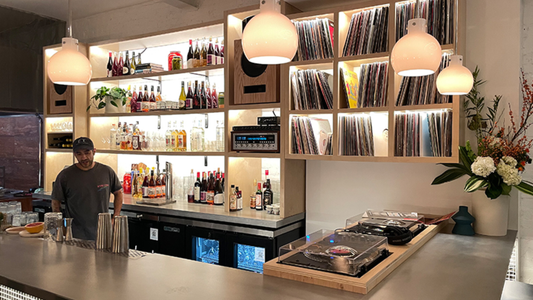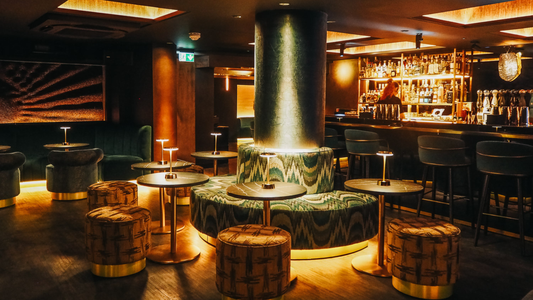
Seoul: The City of Quiet Futures
By Rafi Mercer
Seoul is a city of acceleration. Towers rise, neon spills, subways hum with unrelenting rhythm. Technology here feels alive, moving faster than the people who use it, each update already anticipating the next. Yet within that rush, another layer is emerging — slower, quieter, insistent. Listening bars have taken root in the Korean capital, and in doing so, they reshape how a city of speed remembers stillness.
To walk through Hongdae or Itaewon at night is to be drenched in sound. Cafés buzz, clubs throb, streets echo with voices. And yet, tucked behind doors, you find something else: rooms tuned for silence, shelves lined with vinyl, a turntable spinning a record at its own pace. Inside, the rush recedes. The neon might pulse outside, but here you hear the faintest details of a piano chord, the weight of a bassline, the atmosphere of an album played whole. Seoul has always been about futures — economic, technological, cultural — and now it seems to have found a future in quiet.
This movement owes much to Japan. The kissa tradition in Tokyo set the precedent, teaching that listening could be ritual. Seoul has adapted the model, not copied it. Where Tokyo bars often enforce near monastic silence, Seoul’s carry a softer strictness. Conversation dims, but warmth remains. The ritual is intact, but the atmosphere carries Korean ease: hospitable, communal, touched with curiosity.
The connection is not only eastward. Seoul listens in ways that recall New York, another city of velocity where listening bars act as counterweight. Both cities thrive on speed and density, and in both, the listening bar feels radical precisely because it resists. You could also think of Berlin, another city where austerity sharpens silence. But Seoul adds something different: futurism. The bars feel not nostalgic but forward, as if in slowing down they are already inventing another way of life.
Vinyl has surged in South Korea over the past decade. Record shops once scarce now thrive in Mapo and Gangnam, collectors trade Japanese pressings of Blue Note and ECM titles, and younger listeners buy LPs as if rediscovering tactility for the first time. A record in hand feels different from a stream in the cloud, and in a city where the cloud dominates daily life, that difference matters. To put on a record is to pause. To flip it is to reset. To sit with it is to reclaim time from a culture that often demands it be filled.
The albums chosen matter too. You will often hear Kind of Blue, Miles Davis’s timeless meditation on space, a record we wrote about in our listening bar albums shelf. You may hear Coltrane, Evans, Jarrett, but also ambient textures, Korean indie releases pressed to vinyl in small runs, proof that this is not only about import but about translation. Seoul’s bars are already curating their own canon, a blend of global standards and local voices.
There is also the role of drink. Korean culture has long valued conviviality around the table, and in these bars, whisky often joins the ritual. A dram poured slowly matches the pace of the record, warming the room, linking to the traditions we have traced in our essay on whisky in the listening bar. In a city known for speed, pairing spirit with sound feels almost like defiance.
Listening in Seoul also carries a philosophical layer. In Silence is a Luxury, I argued that stillness has become rare in modern culture, and therefore valuable. Seoul proves the point. A city defined globally by its technological noise is quietly building a counterculture of stillness. To sit in one of these bars is to feel the future folding back on itself, recognising that acceleration without pause becomes emptiness. The record provides the pause.
It fascinates me how naturally young Koreans are embracing this. They arrive in groups, but they know how to fall silent when the music begins. They document their nights on social media, yet they also understand the sanctity of the moment. The duality is striking: technology and ritual, presence and memory, speed and pause. In Seoul, these are not contradictions but coexistences. The city thrives on paradox, and listening bars are now part of that rhythm.
Step outside after a night in one of these rooms, and the contrast is sharp. The city hums with its usual density, traffic streaming, screens glowing. Yet your ear is tuned differently. You hear rhythms in footsteps, harmonies in announcements, syncopation in neon hums. The city becomes an instrument, its noise reframed as music. That is what a listening bar does: it doesn’t only give you an evening, it gives you a way of hearing the city anew.
This is why Seoul belongs firmly within the Tracks & Tales Atlas. It proves that listening culture is not about nostalgia but adaptation. The Japanese kissa gave us the model, but Seoul updates it for a culture where speed is constant and silence is radical. It shows that listening bars are not retro curiosities but futures in themselves, ways of reclaiming attention, of remapping life through sound.
Seoul teaches us that even in the fastest cities, people hunger for pause. And when they find it, in a dimly lit room with vinyl spinning, they carry it back into the neon night, into their own rhythm, into the city itself.
Seoul is a city of quiet futures. It accelerates endlessly, but its listening bars prove that silence remains possible, and in that silence, music breathes.
Rafi Mercer writes about the spaces where music matters. For more stories from Tracks & Tales, subscribe, or click here to read more.







